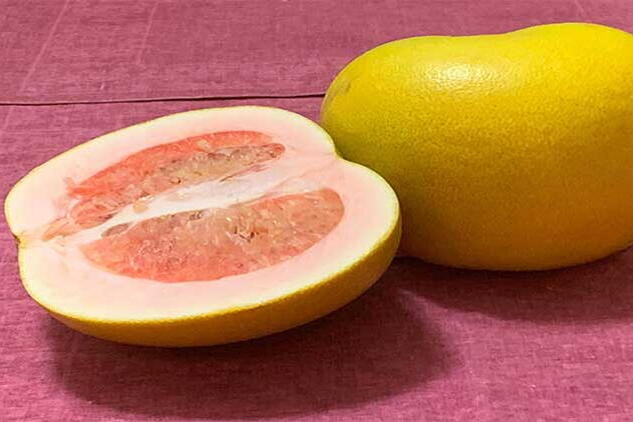Scientists turn pomelo peels into electricity-generating devices

Pomelo, a large citrus fruit widely cultivated in Southeast and East Asia, has a notably thick peel that is typically discarded, contributing to significant food waste. In a recent study, researchers at the University of Illinois Urbana-Champaign investigated methods to repurpose this pomelo peel biomass to develop tools capable of powering small electronic devices and monitoring biomechanical movements.
“There are two main parts of the pomelo peel – a thin outer layer and a thick, white inner layer. The white part is soft and feels like a sponge when you push on it. Some people have used pomelo peels to extract compounds for essential oils or pectin, but we wanted to take advantage of the natural porous, spongy structure of the peel. If we can upcycle the peel to higher-value products instead of simply throwing it away, we can not only reduce waste from pomelo production, consumption, and juice making, but also create more value from food and agricultural waste,” said study co-author Yi-Cheng Wang, an assistant professor in the Department of Food Science and Human Nutrition, part of the College of Agricultural, Consumer and Environmental Sciences at Illinois.
A typical pomelo weighs between 1 and 2 kilograms (2 to 4.5 pounds), with the peel comprising 30% to 50% of the total weight. In their study, the researchers separated the peel from the fruit, removed the outermost layer, and then processed the thick white inner peel. They cut it into smaller pieces and freeze-dried it to preserve its unique three-dimensional porous architecture. These samples were then stored under varying humidity conditions for further analysis.
By examining the chemical composition and mechanical properties of the peel, the research team successfully engineered devices that convert mechanical energy into electricity. These devices also functioned as self-powered motion sensors.
“These devices leverage the principle of contact electrification. That may sound complex, but it’s actually pretty simple and we experience it all the time. For example, when we touch a doorknob, especially in the winter, sometimes we feel a shock. The fundamental mechanism is contact electrification, or triboelectrification – ‘tribo’ means rubbing. When two materials are rubbed against each other, static electricity can form due to the transfer of charges between them.
We wanted to explore if we could collect and utilize that electricity,” Wang said.
The researchers used pomelo-peel biomass and a plastic (polyimide) film as two triboelectric layers that are brought into contact when external force is present. They attached a copper-foil electrode to each of these layers and evaluated how well the resulting device could convert external mechanical energy into electricity.
By simply tapping these pomelo-peel based triboelectric devices with a finger, they could light up about 20 light-emitting diodes (LEDs). They also demonstrated that a calculator or sports watch can be powered solely by these mechanical forces, without the need of external electricity, when the device is integrated with a power-management system that includes an energy-storage unit.